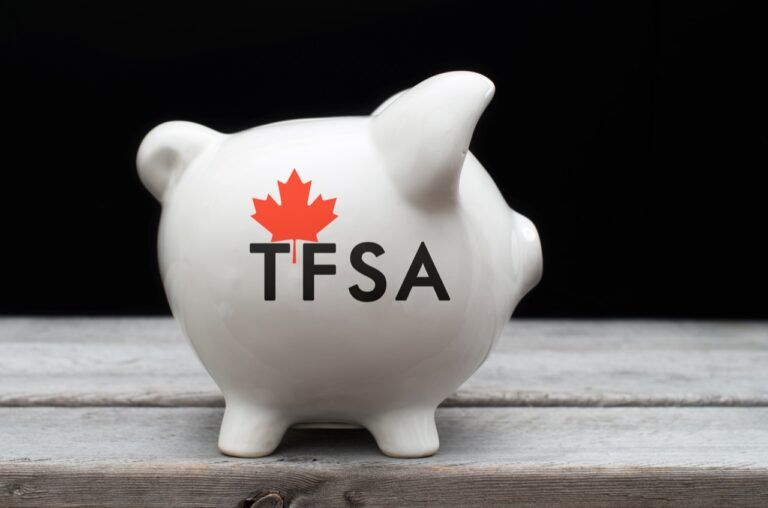With economic uncertainty on the rise, many Canadians are re-evaluating their financial strategies. One question that often comes up is whether it makes sense to withdraw from a Tax-Free Savings Account (TFSA) to pay off a mortgage. While paying off debt can offer peace of mind, there are several factors to consider before dipping into your TFSA.
In this article, we’ll explore the pros and cons of using your TFSA to pay off your mortgage, how to evaluate your financial situation, and strategies to make the best decision for your future.
The Case for Withdrawing from Your TFSA
Tapping into your TFSA to pay off your mortgage can be tempting, especially if market volatility has left you feeling uneasy about investments. Here are some potential benefits:
1. Immediate Debt Reduction
Paying down your mortgage reduces your debt and lowers your monthly financial obligations. This can provide a sense of financial stability during uncertain times.
Example:
- Mortgage Balance: $50,000
- TFSA Balance: $60,000
By withdrawing $50,000 from your TFSA, you eliminate your mortgage payments entirely, freeing up cash flow for other priorities.
2. Interest Savings
Paying off your mortgage early can save you thousands of dollars in interest over the life of the loan, particularly if your mortgage rate is higher than the returns you’re earning in your TFSA.
Pro Tip: Compare your mortgage interest rate to the rate of return on your TFSA investments. If your mortgage rate is higher, it might make sense to pay off the debt.
3. Financial Peace of Mind
Being mortgage-free can provide a psychological boost, especially in uncertain times. You’ll have one less financial obligation to worry about, which can be especially appealing during retirement or economic downturns.
The Case Against Withdrawing from Your TFSA
While paying off your mortgage sounds appealing, withdrawing from your TFSA may not always be the best choice. Here are some reasons to think twice:
1. Lost Tax-Free Growth
One of the biggest advantages of a TFSA is that your investments grow tax-free. Withdrawing funds means losing out on potential compounding growth, which could cost you significantly over time.
Example:
- TFSA Balance: $50,000
- Average Annual Growth Rate: 6%
- Time Horizon: 10 years
By keeping your money in the TFSA, it could grow to over $89,000 tax-free. Withdrawing now sacrifices this future growth.
2. Limited Contribution Room
While you can recontribute the withdrawn amount to your TFSA in the following calendar year, this requires discipline. If you don’t recontribute, you’ll lose out on valuable tax-free savings space.
3. Liquidity Considerations
Your TFSA provides a financial safety net for emergencies or opportunities. Using it to pay off your mortgage could leave you without accessible funds when you need them most.
Red Flag: If withdrawing from your TFSA leaves you without an emergency fund, it could put you at risk during unforeseen circumstances.
Key Factors to Consider
Before deciding whether to withdraw from your TFSA to pay off your mortgage, evaluate your financial situation carefully:
1. Your Mortgage Interest Rate
Compare your mortgage interest rate to the expected rate of return on your TFSA investments. If your mortgage rate is higher, paying it off could be a smart move. If not, you might be better off keeping your money invested.
2. Your Investment Horizon
If you’re years away from retirement, keeping your TFSA funds invested allows them to grow tax-free. For those closer to retirement, reducing debt may be a higher priority.
3. Economic Conditions
In times of economic uncertainty, having accessible cash can be valuable. Consider whether you might need the liquidity of your TFSA in the near future.
4. Your Financial Goals
Think about your long-term financial objectives. Is being debt-free your top priority, or are you focused on maximizing your retirement savings?
Pro Tip: Work with a financial advisor or mortgage broker to create a plan tailored to your unique goals.
Balancing Both Strategies
You don’t necessarily have to choose between paying off your mortgage and keeping your TFSA intact. Here’s how to strike a balance:
- Partial Withdrawal: Use a portion of your TFSA to pay down your mortgage, reducing your debt while keeping some funds invested.
- Increase Mortgage Payments: Instead of withdrawing from your TFSA, consider increasing your regular mortgage payments to accelerate payoff.
- Refinance Your Mortgage: If interest rates are favorable, refinancing could reduce your monthly payments without dipping into your savings.
Pro Tip: Review your lender’s prepayment options to see if you can make extra payments without penalties.
Final Thoughts
Deciding whether to withdraw from your TFSA to pay off your mortgage is a personal choice that depends on your financial situation, goals, and risk tolerance. While being mortgage-free offers peace of mind, preserving your TFSA allows your investments to grow tax-free and provides valuable liquidity.
By carefully evaluating the potential benefits and drawbacks of each option, you can make an informed decision that supports your financial future.
Need advice on managing your mortgage or investment strategy? Contact The Local Broker for personalized guidance and support tailored to your needs.
